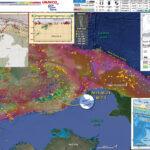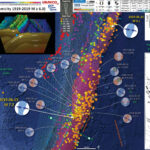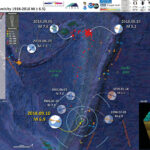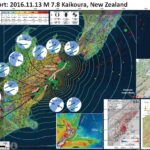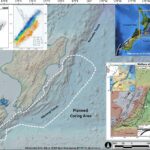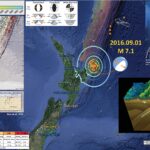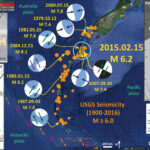I had been making an update to an earthquake report on a regionally experienced M 5.6 earthquake from coastal northern California when I noticed that there was a M 7.3 earthquake in eastern Indonesia. https://earthquake.usgs.gov/earthquakes/eventpage/us600044zz/executive This earthquake is in a…
Earthquake Report: Kermadec Trench
There was just an earthquake associated with the plate boundary that forms the Kermadec Trench, a deep oceanic trench that extends north from New Zealand, towards the Fiji Islands. https://earthquake.usgs.gov/earthquakes/eventpage/us6000417i/executive A minor tsunami (~25 cm in size) has been recorded…
Earthquake Report: Kermadec
The earthquakes continue, every day. Today, there was a large earthquake associated with the subduction zone that forms the Kermadec Trench. This earthquake was quite deep, so was not expected to generate a significant tsunami (if one at all). There…
Earthquake Report: Kaikōura, New Zealand Post # 01
This is the first of several posts about a complex earthquake series that happened along the northern end of the South Island in New Zealand. I was at sea on the R/V Tangaroa collecting piston cores offshore along the Hikurangi…
Getting ready for the cruise!
2016.11.09 Getting ready for the cruise! My main research cruise blog page is here: http://humboldt-jay.blogspot.com. We will be heading to sea to search for submarine landslide deposits called turbidites. There are several ways that these landslides can be triggered. Earthquakes…
Earthquake Report: New Zealand!
This was a very busy week for me, so I missed reporting on this series of earthquakes offshore the North Island of New Zealand. I did put together an interpretive Earthquake Report poster for these earthquakes for my general education…
Earthquake Report: Antarctic plate!
We just had an interesting mid-plate earthquake (not along a plate boundary). Hat Tip to Jascha Polet, who pointed out this is in the region of the 1998 M 8.1 earthquake, one of the largest strike-slip and mid-plate earthquakes ever…
Earthquake Report: Macquarie – New Zealand
There was an earthquake along the plate boundary between the Australia plate to the west and the Pacific plate to the east, just south of New Zealand. Here is the USGS website for this M 6.2 earthquake. Yesterday on 2015/02/14…

